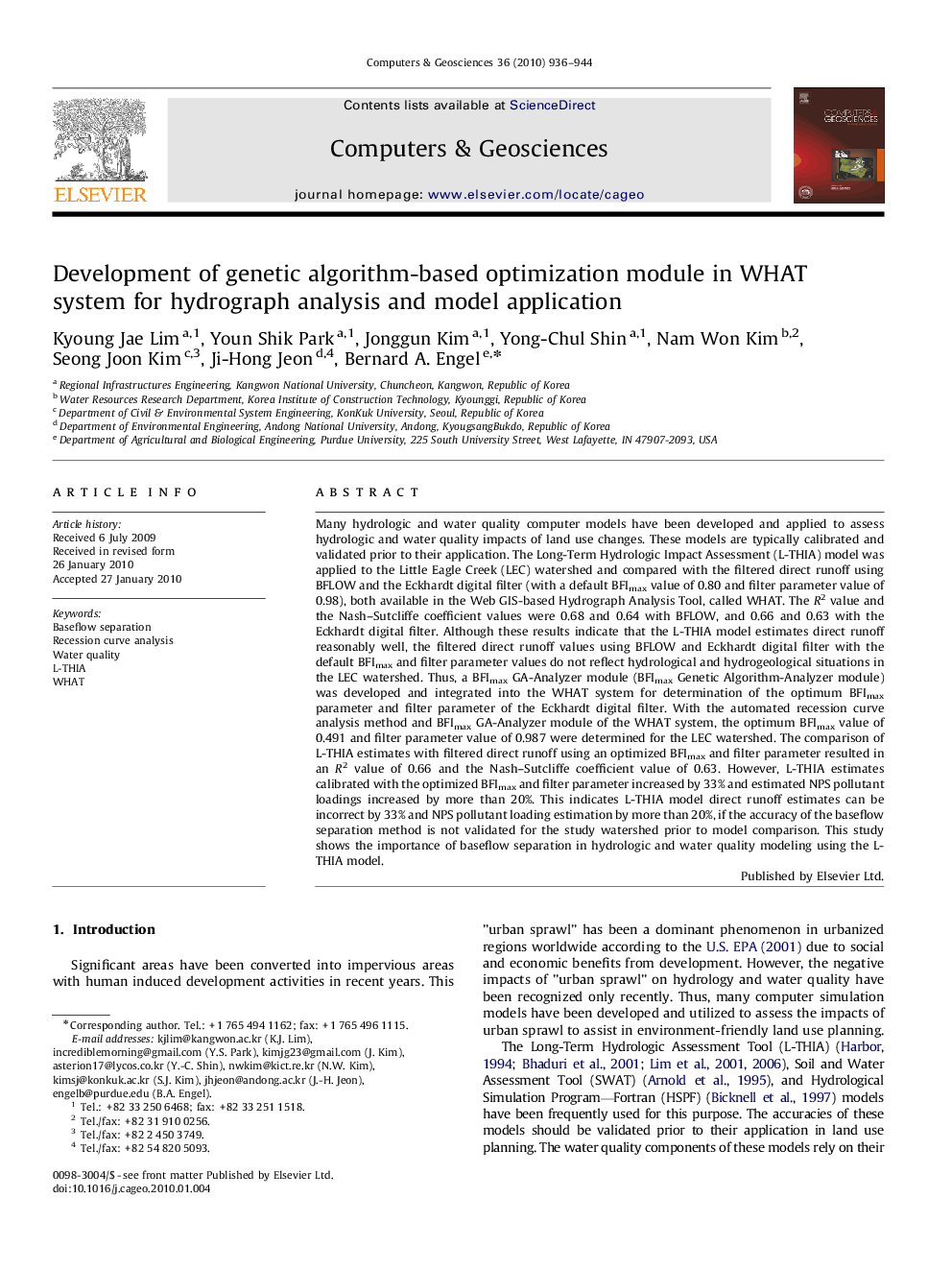| کد مقاله | کد نشریه | سال انتشار | مقاله انگلیسی | نسخه تمام متن |
|---|---|---|---|---|
| 508162 | 865177 | 2010 | 9 صفحه PDF | دانلود رایگان |

Many hydrologic and water quality computer models have been developed and applied to assess hydrologic and water quality impacts of land use changes. These models are typically calibrated and validated prior to their application. The Long-Term Hydrologic Impact Assessment (L-THIA) model was applied to the Little Eagle Creek (LEC) watershed and compared with the filtered direct runoff using BFLOW and the Eckhardt digital filter (with a default BFImax value of 0.80 and filter parameter value of 0.98), both available in the Web GIS-based Hydrograph Analysis Tool, called WHAT. The R2 value and the Nash–Sutcliffe coefficient values were 0.68 and 0.64 with BFLOW, and 0.66 and 0.63 with the Eckhardt digital filter. Although these results indicate that the L-THIA model estimates direct runoff reasonably well, the filtered direct runoff values using BFLOW and Eckhardt digital filter with the default BFImax and filter parameter values do not reflect hydrological and hydrogeological situations in the LEC watershed. Thus, a BFImax GA-Analyzer module (BFImax Genetic Algorithm-Analyzer module) was developed and integrated into the WHAT system for determination of the optimum BFImax parameter and filter parameter of the Eckhardt digital filter. With the automated recession curve analysis method and BFImax GA-Analyzer module of the WHAT system, the optimum BFImax value of 0.491 and filter parameter value of 0.987 were determined for the LEC watershed. The comparison of L-THIA estimates with filtered direct runoff using an optimized BFImax and filter parameter resulted in an R2 value of 0.66 and the Nash–Sutcliffe coefficient value of 0.63. However, L-THIA estimates calibrated with the optimized BFImax and filter parameter increased by 33% and estimated NPS pollutant loadings increased by more than 20%. This indicates L-THIA model direct runoff estimates can be incorrect by 33% and NPS pollutant loading estimation by more than 20%, if the accuracy of the baseflow separation method is not validated for the study watershed prior to model comparison. This study shows the importance of baseflow separation in hydrologic and water quality modeling using the L-THIA model.
Journal: Computers & Geosciences - Volume 36, Issue 7, July 2010, Pages 936–944